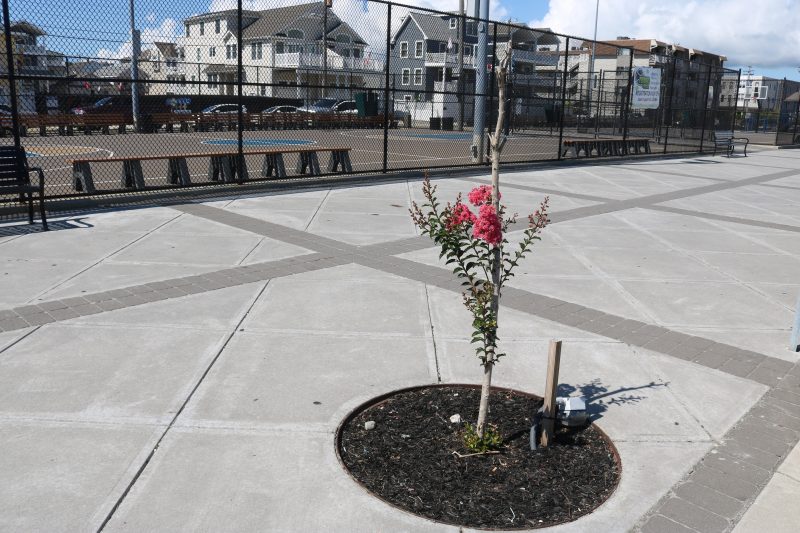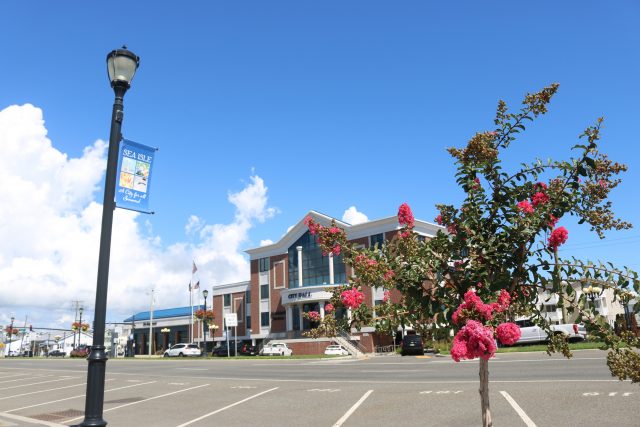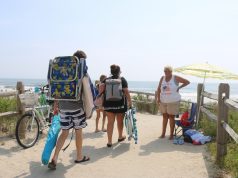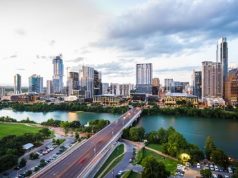By DONALD WITTKOWSKI
The crepe myrtles that adorn the main entryway into Sea Isle City had a tough act to follow.
This time last year, the John F. Kennedy Boulevard corridor was beautified with tropical-like palm trees featuring silky green fronds swaying in the breezes.
Predictably, the exotic palm trees died off during the harsh winter, so the city decided to replace them with hardier crepe myrtles that have a history of doing well at the shore.
City spokeswoman Katherine Custer said the public has reacted favorably to the crepe myrtles since their debut in the spring.
“The city is getting positive feedback from the public,” she said.
So far, most of the crepe myrtles have fared well, blossoming with large pink flowers that have added a dash of color to the JFK Boulevard gateway.
Others, though, have struggled. Some of them have only a few blossoms, while others are short and relatively stumpy because their limbs were either trimmed back or cut off at the top.
“They are not all having what I would say is the best inaugural year,” Custer noted of the lackluster trees.
“We are keeping an eye on them to make sure they get everything they need to accent our main entry corridor,” she added.
Custer said that anyone who has a garden knows that it can take a while before the trees and flowers fully develop into something beautiful – and the same thing may be true with some of the crepe myrtles.

In recent years, Sea Isle has struggled to find the right types of trees that are hardy enough to withstand the punishing winds and salt air of the shore.
Previously, the city experimented with trident maples and sweetbay magnolias to beautify JFK Boulevard. However, they fared poorly in the shore’s salty and windy environment. Many of them died off or were reduced to scraggly, leafless skeletons – hardly leaving a good first impression on visitors arriving in Sea Isle.
In a bit of whimsy, Sea Isle replaced the maples and magnolias in the summer of 2021 with 40 palm trees. The splashy palms created a tropical-like setting reminiscent of Florida or the Caribbean islands.
Mayor Leonard Desiderio made it clear when the delicate palm trees were planted that they were only a temporary way to dress up the JFK Boulevard entranceway and likely would not survive the winter.
Sure enough, the once-silky green palm leaves turned brown and crusty as the weather became cold. The trees died off in winter. The final blow was a colossal coastal storm on Jan. 3 that dumped more than a foot of snow on Sea Isle and left the palms smothered in an icy, white coating.
During their brief reign in Sea Isle, the palm trees were the source of intense public debate over whether they were worth the $8,000 that the city paid to buy them from a Florida grower.
Comments posted on social media suggested that the public either loved or hated the palms. Some people thought they added a touch of the tropics in Sea Isle, while others claimed they were a waste of money.
The city decided not to bring back the palms, choosing the crepe myrtles instead because of their reputation as a robust tree that can adapt to the seashore environment.

Altogether, 38 crepe myrtles featuring pink blossoms decorate the JFK Boulevard corridor. The trees, paid for by the city’s Environmental Commission through T-shirt sales over multiple years, were formally dedicated on April 29 during Sea Isle’s Arbor Day celebration.
Crepe myrtles can be found in many private gardens at homes around town, underscoring their history of doing well on the barrier island. City officials believe the crepe myrtles along JFK Boulevard will thrive in the long run, Custer noted.
“We’re very optimistic,” she said.








